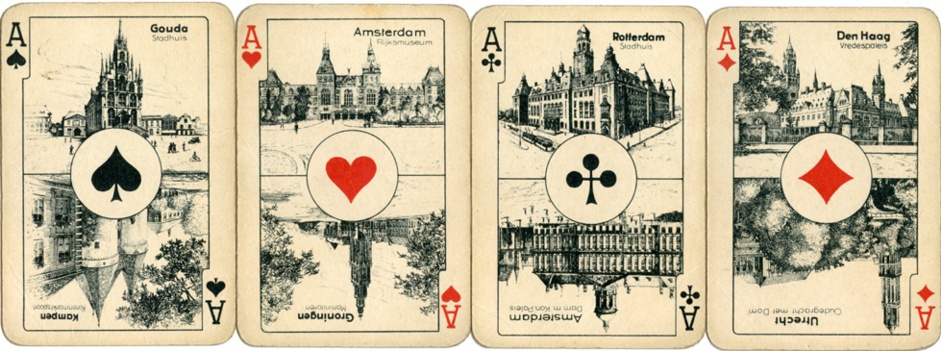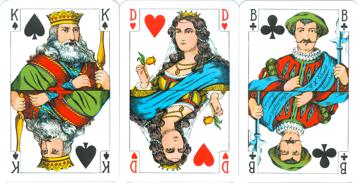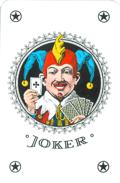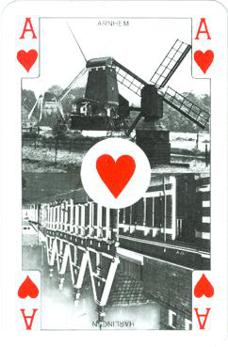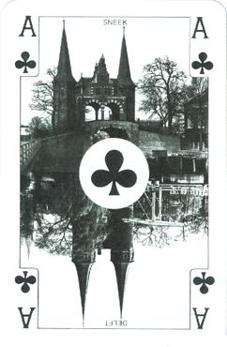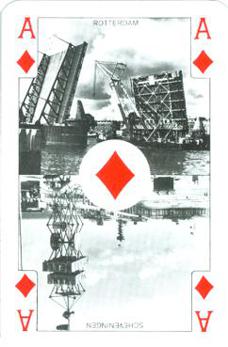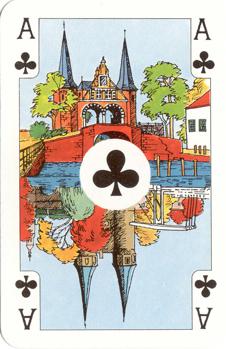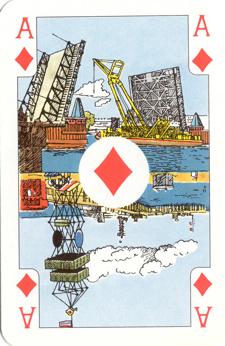 |
This deck of 52 cards and a joker was also printed by the Vereinigte Stralsunder Spielkartenfabriken. It was printed in chromolithography, the courts have the (Dondorf) Rhineland pattern. Only 2 indices. Also published for Scandinavia with plain aces, but this edition was specially made for the Netherlands in the 1920's. Set of aces with not often seen views of Kampen and Gouda. Set is also found in a deck with a more luxurious Salon pattern on the courts, as shown here below. Note the different suit sign of the clubs there. |
|
|
|
 |
|
|
This deck
was also printed by the Vereinigte Stralsunder Spielkarten- fabriken, but published
as "Salonkaart Nr 1000A". The courts
have the Salon "house" pattern, but here with a different set
of b/w Dutch scenic aces. The text on the box is all in Dutch, so
this deck was specially made for the Dutch market as a Pandoer deck, 32
cards and a 6 of hearts as extra card. There's another difference between the previous deck and this deck: the above was printed in chromolithography and this deck in offset. |
|
